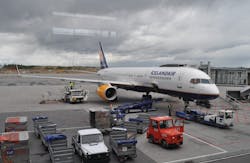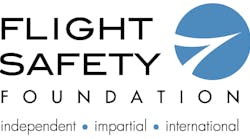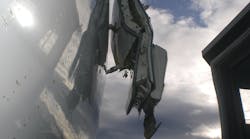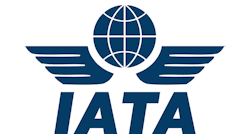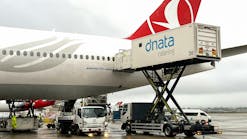A Management Perspective On Human Factors In Ground Operations
Airline ground operations are normally rendered under very challenging environmental, infrastructural and organizational conditions.
Physically demanding tasks, variable weather phenomena, night shifts and poor lighting, time pressure, staff shortages, the unavailability of tooling and the interface with pieces of equipment that are increasingly technologically sophisticated are only some of the typical hassles that characterize the typical working environment of ground handling personnel.
The working environment includes the physical design of the place where services are rendered, the procedures, the standards and the practices with which operatives are expected to comply.
In the event of an accident there may well be reasons for what otherwise could be written off as no more than the result of human error. The working environment can have considerable influence on whether operatives make error.
According to the Federal Aviation Administration, “the majority of ramp accidents and incidents involve some type of human error or violation of company policies, processes and procedures.”
It is up to management to see that the working environment does not lead, or lend itself, to human error. Part of the working environment is the place which is given to safety in the culture of an organization.
According to the FAA, Human Factors programs contribute to more efficient and safer working environments for ground handlers: “Effective human factors training improves work performance and promotes workforce physical and mental health” by emphasizing “necessary written and verbal communications to minimize errors resulting from task interruptions and shift turnover.”
HUMAN FACTORS TRAINING
Human factors (HF) training aims to recognize and prevent human error, it includes such subjects as crew resource management (CRM), human performance limitations and fatigue risk management, which are targeted to familiarize line personnel of socio-technical production systems, as well as their supervisors, with techniques to improve the interaction with machines, co-workers and the environment.
Research and experience in other industries and other fields of air operations – such as flight and maintenance – have shown that HF training can address many of the issues that contribute to events.
Given the importance of the human function in the rendering of ground services, it can be assumed that even in airline ground operations human factors training can provide the knowledge to understand important principles and procedures and to integrate them into the work environment. Training can promote awareness and affect attitude thereby reducing costs associated to human performance issues.
The FAA provides a number of additional reasons why HF training is important in airline ground operations:
- It contributes to creating and reinforcing a positive safety culture whereby employees practice safe habits.
- HF training for both the leadership and the workforce is a critical and cost-effective first step in identifying methods to recognize, understand and manage human performance issues.
- Initial and recurrent training on new regulations, procedures and equipment are opportunities to reinforce awareness of the HF issues that affect job performance.
- HF training is essential to understanding the contributing factors to events.
- Last but not least, when equipment and procedures are complicated, the human is the last line of defense for safety, efficiency and injury prevention.
CURRENT EFFORTS
With this in mind, it’s important to know that there is no regulation mandating HF training to airline ground handling companies. This is unlike what characterizes regulatory requirements for other aviation service providers, where HF training instead constitutes a long and established field of training: human factors are part of the initial and recurrent training that pilots and maintenance technicians are required to undergo according to the European Aviation Safety Regulations.
Despite the lack of regulatory requirements, the ground handling industry is demonstrating to be increasingly proactive with regard to the recognition of the importance of human factors on the ramp.
Over the past few years human factors in ground operations has been an agenda point at the IATA Airside Safety Group and also at the Australasian Aviation Ground Safety Council, both these groups have special seminars where human factors are a key element. Also, standard training sessions now have more human factors lectures included as the business environment calls for human factors to be made more understandable.
The ISAGO Standards Manual (3rd Edition), for example, lists human factors in the airside safety training specifications required to be complied with by audited ground service providers.
While ISAGO does not provide a training framework specifically developed for ground service providers, it does list some training items that are typically part of a consistent HF training syllabus and namely:
- motivation and attitude,
- human behavior,
- communication skills,
- stress,
- ergonomics,
- effects of psychoactive substances (drugs and alcohol),
- fatigue,
- time pressure,
- peer management pressure,
- situational awareness
- and teamwork.
An airline ground manager wanting to find some useful training material that has been specifically developed for ground operations – even in the perspective of complying with ISAGO requirements for HF training - will find satisfaction in the availability online of a “Ramp Resource Management” training syllabus developed by the European Commercial Aviation Safety Team (ECAST) Ground Safety Working Group and the Netherlands’ National Aerospace Laboratory (NLR).
The syllabus has been designed in modules, with each module covering a different subject.
Modules can be used separately but ECAST recommends to use the syllabus in its entirety –as all subjects are related and sometimes they overlap – and to provide at least a four-hour training since the aim is to provide trainees with insight and to change their attitudes toward safety.
The training syllabus consists of five chapters:
- Introduction to the turnaround process,
- Safety regulations,
- Teamwork,
- Threat and error management
- Human performance and limitations.
Every chapter has a set of slides and a set of instructor notes. A case study related to a towing incident analysis is also included in the syllabus. Users are free to use and personalize the syllabus, but are requested to keep the ECAST and the NLR logos used in the standard version of the syllabus available for download online.
MAIN LIMITATION
Since the main limitation to a thorough implementation of HF programs in airline ground operations lies in the fact that there is currently no regulatory requirement mandating ground service providers to have HF management systems in place.
For those operators wanting to be proactive and to operate above the bare minimum regulatory standard, there exist some additional limitations that need to be targeted in order to successfully implement HF training programs and, namely, the seasonality and the high turnover rate of ground handling jobs.
Investing on HF training may not require particularly significant capital expenditures, but it does indeed require otherwise productive time of personnel to become idle and a significant organizational commitment. These barriers can be relatively easily overcome when there is good personnel retention, but are more difficult to deal with in case of a significant amount of seasonal contract staff and high turnover rate.
Paradoxically, employee retention is perhaps what HF training programs actually target the most.
Although they are difficult to quantify, benefits on the overall company culture can be expected from the implementation of HF training initiatives. The content of the training in fact is targeted to improved communication and relationships.
With employers demonstrating a willingness to train line employees beyond the bare minimum and, consequently, a consideration that an updated expertise of line personnel is deemed strategic to the company for its improved competitive performance, the outcome is an empowerment of employees with a consequential increase in motivation, retention and HF training effectiveness.
For this to happen the main requirement is senior management’s buy in of HF training implementation and this buy in may be difficult to achieve if such training programs are not mandated by regulators or requested by sizeable customers (e.g. large international airlines requiring ground handlers at out-stations to comply with ISAGO).
As stated by the FAA “cost justification helps ensure ongoing support for a human factors program.” In other words, a strong business case should ensure top management buy in. Data showing sizeable – or even perhaps increasing – injury and accident rates and rising insurance premiums should make the case to demonstrate that a problem does exist and that, given the centrality of the human function in airline ground services, HF training is a well-thought solution.
About The Author: Mario Pierobon holds a Master’s Degree in Air Transport Management from City University London and works in business development and project support at Great Circle Services in Lucerne, Switzerland. Mario regularly writes about aviation safety and his main professional and research interests are in the areas of airside safety.
